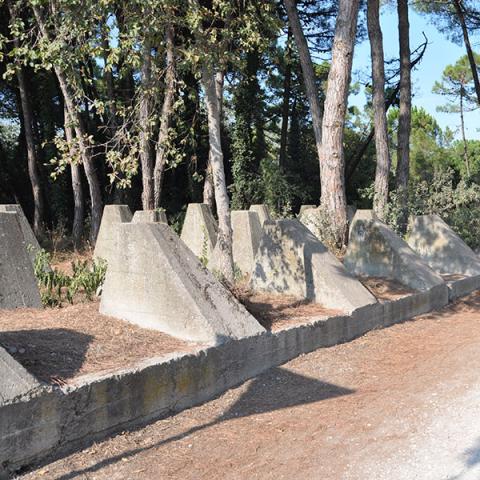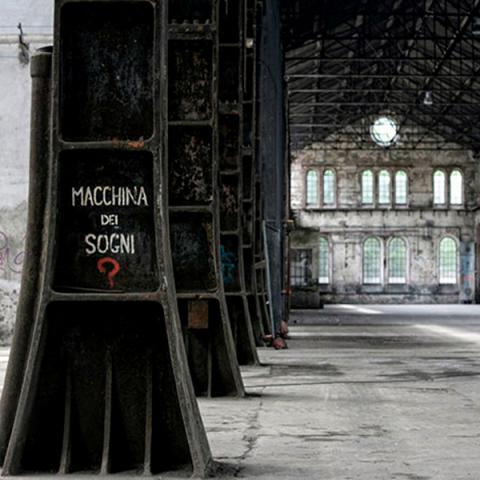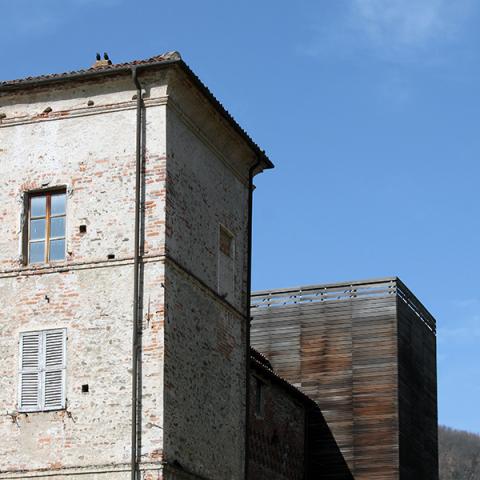chiara.mariotti7_1021
PROGETTO LINEA GALLA PLACIDIA
Il contributo presenta il progetto “Linea Galla Placidia” finanziato nel 2020 dalla Regione Emilia-Romagna, ne descrive la genesi, i presupposti, gli attori e i primi risultati, proponendo una riflessione sulle strategie di valorizzazione dei patrimoni cosiddetti “dissonanti”. Il paesaggio militare dei bunker tedeschi eretti a partire dal 1943 a difesa della costa adriatica costituisce un pilota interessante per testare e abilitare soluzioni non convenzionali di riappropriazione, conservazione e fruizione delle eredità controverse del passato.
THE LINEA GALLA PLACIDIA PROJECT
This paper presents the “Linea Galla Placidia” project financed in 2020 by the Emilia-Romagna Region, it describes the genesis, assumptions, actors and first results of this venture, providing a reflection on the enhancement strategies of the so-called “dissonant” heritage. The military landscape of German bunkers erected from 1943 onwards along the Adriatic coast offers an interesting pilot for testing and enabling unconventional solutions of re-appropriation, conservation and access to our controversial inheritance.

OGR – Officine Grandi Riparazioni di Torino
Le Officine Grandi Riparazioni (OGR) di Torino sono un esempio virtuoso di riuso e valorizzazione del patrimonio industriale innescato a partire dalla sperimentazione di nuovi processi di sviluppo economico in cui il ruolo e la funzione della cultura e delle attività creative diventano sempre più importanti e decisivi nella catena del valore delle produzioni locali. Il contributo ripercorre le fasi, gli attori e i significati di questo processo, focalizzandosi sul meccanismo culturale di ‘rimessa in funzione’ delle OGR da officine di riparazione dei treni a fucina di creatività e innovazione.
The OGR – Officine Grandi Riparazione in Turin
The case of Officine Grandi Riparazioni (OGR) in Turin is a virtuous example of reuse and enhancement of industrial heritage triggered by the experimentation of new processes of economic development in which the role and function of culture and creative activities become increasingly crucial in the value chain of local productions. This paper retraces phases, players and meanings of this process, focusing on the cultural mechanism of ‘restarting’ OGR from a train repair factory to a creativity and innovation hotbed.

From know-how to show-how_P2
Nell’investigare nuovi significati del dualismo know-how/show-how, l'articolo riflette sul ruolo e sull'importanza delle tecnologie di comunicazione per l'intervento sulla preesistenza storica. L’analisi di alcuni noti restauri e delle relative vicende mediatiche offre l’occasione per esaminare processi e strumenti informativi chiamati a veicolare i contenuti del progetto, interrogarsi sulla loro efficacia in relazione alle istanze della disciplina, nonché ricercare spazi e modi di divulgazione capaci di trasferire conoscenza e contribuire concretamente alla tutela del patrimonio.
From know-how to show-how_P2
The dualism know-how/show-how comprises different features and reading keys. This second article reflects on the role and importance of the ICT - Information and Communications Technologies for the intervention on historical pre-existence. The analysis of some well-known restoration works and the related media events offers the opportunity to examine processes and information tools for conveying the project contents, to question their effectiveness concerning the issues of the discipline, as well as to investigate ways of dissemination leading concretely to the transferability of knowledge and protection of Cultural Heritage.

From know-how to show-how_P1
Giocando sui termini di know-how e show-how, il contributo approfondisce il ruolo della comunicazione nell'intervento sulla preesistenza. L'analisi di alcuni noti restauri offre l'opportunità di riflettere su autorialità e anonimato del progetto, interrogandosi sulle conseguenze del processo di associazione autore-opera per la disseminazione della cultura del restauro.
From know-how to know-how_P1
By playing on the terms of know-how and show-how, the paper reflects on the importance of communicating the intervention on historical pre-existence. The analysis of some well-known restoration works offers the opportunity to think about the authorship and anonymity of the project, wondering about the consequences of associating author-work for the dissemination of the culture of restoration.
Una favola ancora senza lieto fine
Lungo l’antica Via del Sale, nel Piemonte sud-occidentale in provincia di Cuneo, sorge il Castello di Saliceto. Eretto verosimilmente tra il XII e il XIII secolo, il manufatto mostra oggi i segni stratigrafici di una vicenda costruttiva e trasformativa complessa, di cui ancora si distinguono le tappe essenziali: la fase difensiva medievale, le modifiche rinascimentali, la perdita della quarta torre angolare, il restauro dei primi anni Duemila, il recente e inaspettato abbandono.
Partendo dalla situazione attuale del fabbricato, il contributo ripercorre gli eventi che hanno coinvolto il castello negli ultimi vent’anni, si sofferma su ciò che accade “il giorno dopo” il restauro, ribadisce l’efficacia dell’operazione sul piano sincronico, ne indaga la risposta culturale all’indomani della chiusura del cantiere e, alla luce delle mutate condizioni al contorno, propone una riflessione sull’incidenza delle forze sociali, politiche ed economiche sull’azione di rivitalizzazione, sottolineando la necessità di porre in stretta relazione l’intervento di conservazione con i processi di gestione e manutenzione del patrimonio storico costruito e, come in questo caso, appena restaurato.
A fairy tale still without a happy ending
Saliceto Castle stands along the ancient Via del Sale (Salt road), in the province of Cuneo, in southwestern Piedmont, Italy. Probably built between the twelfth and the thirteenth century AD, the structure shows today the stratigraphic signs of several and subsequent rearrangements, whose fundamental stages can still be observed: the defensive medieval phase, the Renaissance changes, the loss of the fourth corner tower, the restoration works of the early 2000s, the recent and unexpected abandonment.
Starting from the current state of the building, this paper traces back the main events in the castle’s history of the last twenty years, focusing on what happened "the day after" the restoration, stressing the effectiveness of the whole project, and investigating the cultural response after the closing of the worksite. Finally, in the light of changed circumstances, the paper reflects on the impact of social, political and economic forces on the redevelopment project, underlining the need to closely combine the conservation actions with the management and maintenance processes of the recently restored – as in this specific case – built heritage.

